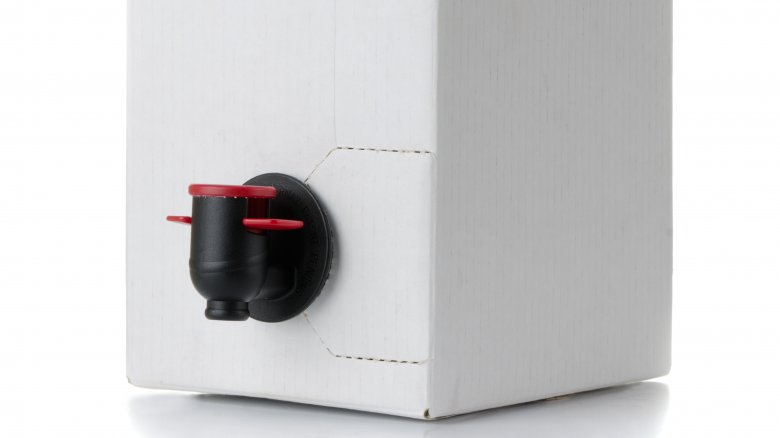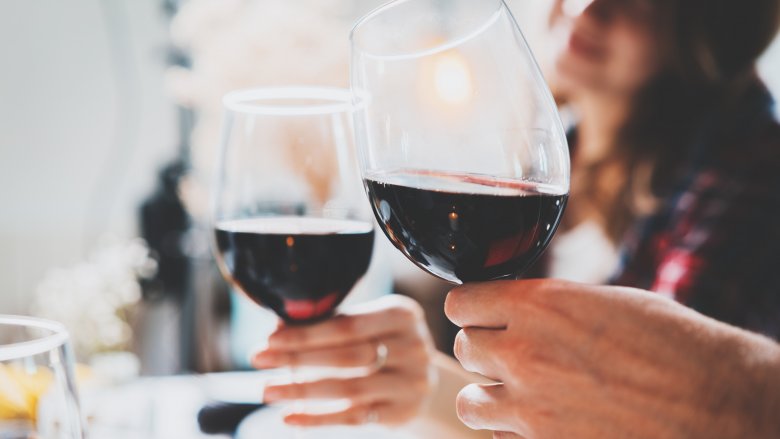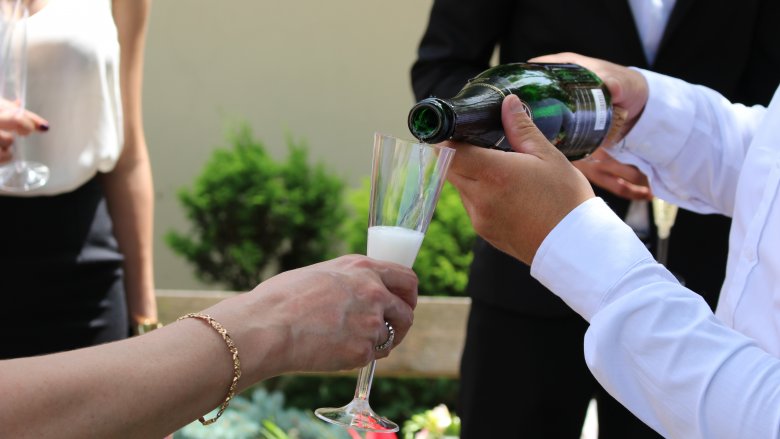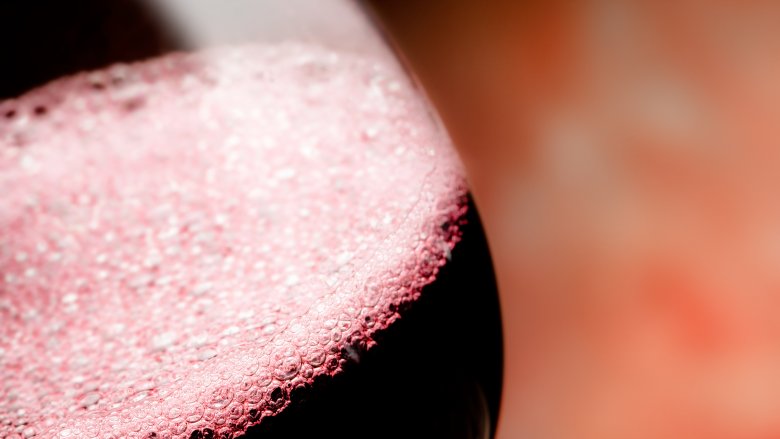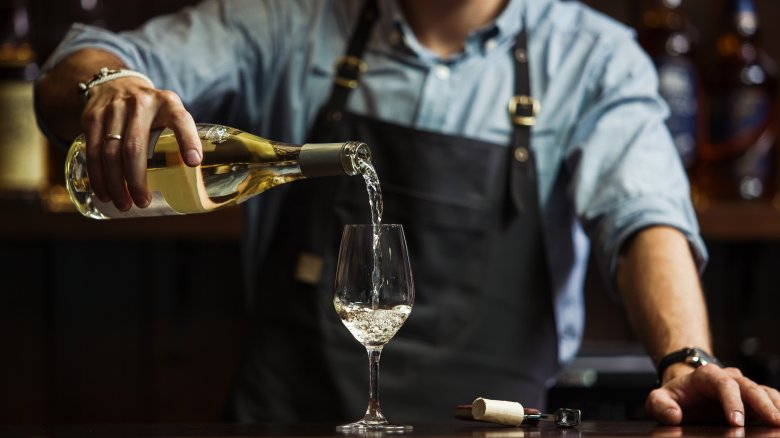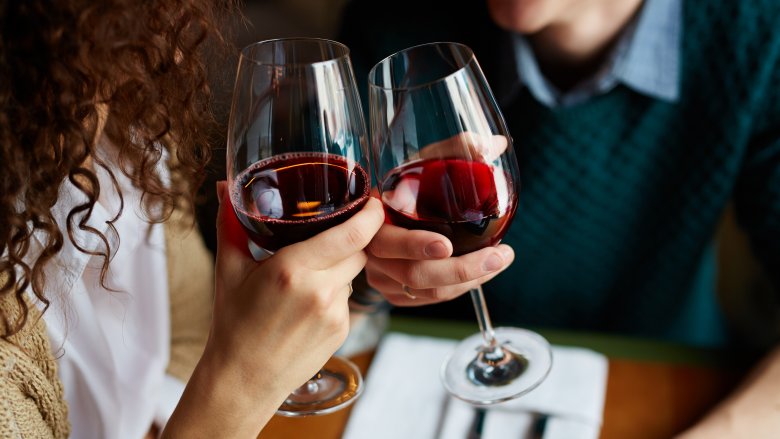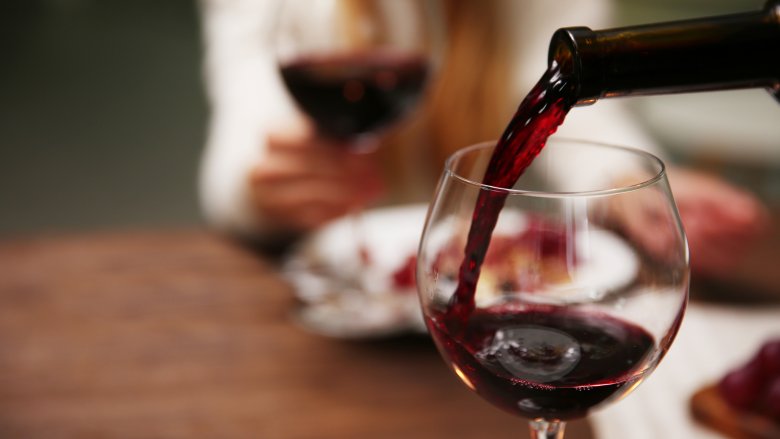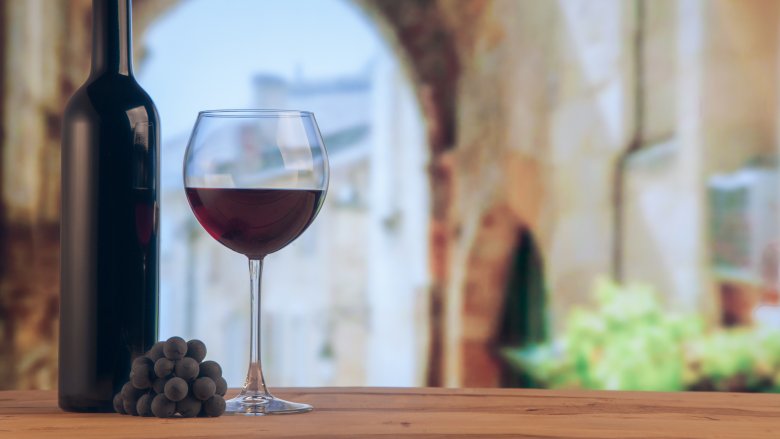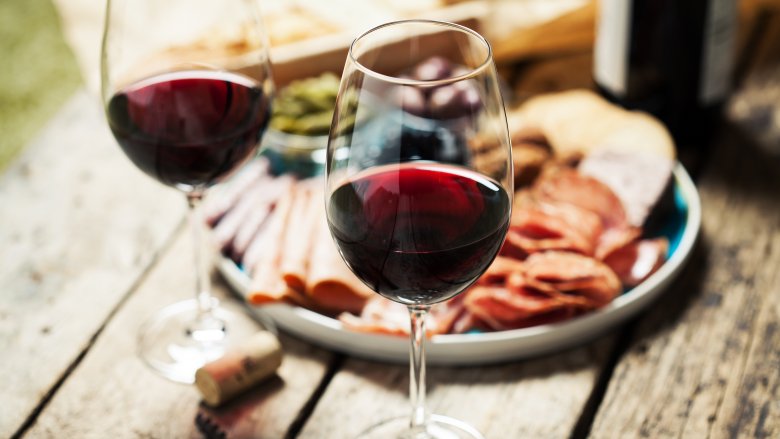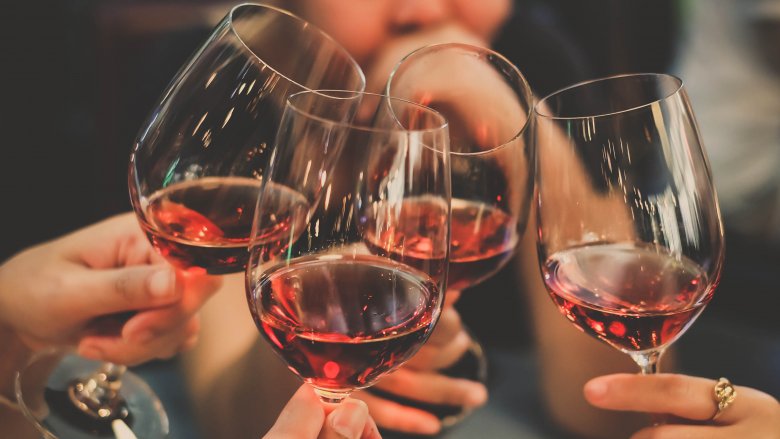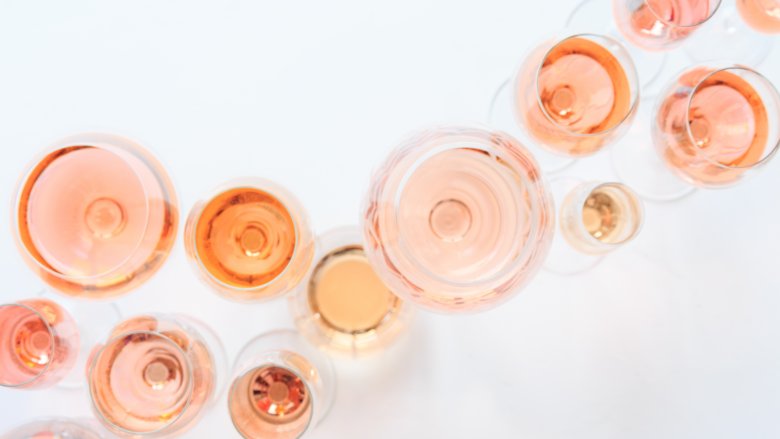7 Wines You Should Be Drinking And 7 You Shouldn't
Shopping for wine — or ordering it at a restaurant — can be a frustrating, confusing experience. If you don't feel like you know much about wine, you can resort to picking your favorite name or label or region or, maybe most commonly, whatever's cheapest. While that doesn't always mean that you'll wind up with a dud, you need to know which wines you should be drinking and which you shouldn't. It'll simplify your purchasing process, help you find something you really actually like, and make sure you get the most bang for your buck. There's nothing worse than haphazardly grabbing a bottle of wine off the shelf that you think looks like it'll be good, paying a little bit more for it, and then opening it and realizing you hate it. Knowing what the experts say can help you avoid those frustrating blunders, and make sure you end up with a great glass of wine, to boot.
Drink: Boxed wine
You likely associate boxed wine with those giant boxes filled with lackluster, vinegary wines popular among college kids and those who care about buying the most wine for the cheapest price. That reputation, however, isn't quite accurate any more. According to Lifehacker, many boxed wine brands contain wine that's just as good as what you'd get in a bottle, just in more convenient and eco-friendly packaging. It also stays fresher longer, and is more affordable than if you bought the equivalent number of bottles.
In an interview with Lifehacker, sommelier Tia Eshou said the quality of boxed wines, like their bottled counterparts, vary from box to box, brand to brand. Some are great, some are just OK, and, yes, some are bad. If you're avoiding boxed wine just because you've always assumed — or been told — that all boxed wine is bad, it's time to rethink boxed wine. There's no need to uniformly avoid it at all costs any longer.
Drink: Gamay
Gamay is an easy-drinking red that's very food-friendly and, according to Thrillist, fruity and light. It's also often an affordable choice, which is great news for wine lovers on a budget. It's also low alcohol and low calorie — according to Thrillist, each glass of Gamay typically contains somewhere between 110 and 130 calories, making it one of the more figure-friendly, but still delicious, choices.
Drink: Extra brut champagne
Champagne can feel a little bit intimidating, but it's definitely one of those wines that you should be drinking. Extra brut champagne, rather than other kinds, might be your best bet, particularly if you're watching your waistline. According to Thrillist, a glass of extra brut Champagne ranges in calorie content from 90 to 120 calories. Avoid anything too sugary and opt for the bone dry, extra brut version specifically. While your very cheapest bottles might not be anything special, there are plenty of choices that are relatively affordable and high-quality.
Drink: Muscadet
Muscadet, a dry white from the Loire Valley in France, is, according to Vine Pair, a great value when you compare quality and price. These wines are made from Melon de Bourgogne grapes, which means Muscadet is more of a nickname than the actual, official name. They are salty, a little fruity and mineral in flavor, but still have some oomph — given that they're aged on lees, which are grape skins and dead yeasts. "Lees-aging adds creaminess and complexity to a wine that's already packed with peach and apricot flavors," wrote wine writer and expert Rachel Signer for Vine Pair. "Muscadet is the traditional pairing for oysters, and it's great with all kinds of seafood."
Drink: Lambrusco
While Lambrusco is still battling its old reputation as a wine that's less than stellar, it's really not that way anymore. Made from lambrusco grapes and popularly produced in the Emilia-Romagna region of Italy (from which Parma ham and Parmigiano-Reggiano both hail), light and fizzy Lambrusco wines deserve a place on your table. According to Vancouver Magazine, they range from dry to sweet, from light and effervescent to dark and tannic. Bonus: because there's such a range of options, they also go quite well with a wide variety of foods.
Drink: Vermentino
Vermentino is the summer white wine that you're not drinking but absolutely should be. According to an article on Wine Library, Vermentino, grown in Provence, Corsica, Sardinia, and Languedoc-Rousillon, is light, crisp, refreshingly acidic and endlessly sippable. It's a Mediterranean vacation without a long flight. This wine is especially good to pair with cheeses and grilled seafood.
Drink: Rioja
It might not normally be on your list when you brainstorm wines you definitely should be drinking, but Rioja is, as Alexander LaPratt, sommelier at Atrium DUMBO, told Serious Eats, a major value. "For the most part they're not expensive, they're often aged 3-10 years before release, they're complex and have great acidity which keeps them in balance and makes them very food friendly," said LaPratt. If you like red wine, add Rioja to your list of varieties to try.
Don't drink: Wines that score 100 points
While rating systems are meant to help you decipher which wines are worth purchasing and which wines aren't, all too often, those that are said to be essentially perfect fail to live up to the hype. As Eric Railsback, the wine director at San Francisco's Mason Pacific, told Vine Pair, "Most of these wines are made to taste 'great' right away and then fall apart over time." It might, occasionally, be worth it to splurge on the 100 point wine, but, more often than not, you may rather just skip it.
Don't drink: Australian shiraz
According to GQ, Australian shiraz is one of the ten most overrated wines in the world. It's uninteresting, often too oaky and too astringent tasting from a higher alcohol content (the GQ article compares shiraz to cough syrup) — ultimately setting you up for disappointment. Instead of going ahead and purchasing something a little bit lackluster, according to GQ, opting for a Syrah is a better bet. Or, simply, opt for another red that's more exciting, more interesting, and a better wine for the money.
Don't drink: Super Tuscans
Super Tuscans, according to Wine Spectator, came about in the 1970s, after some producers grew weary of all of the restrictions that come along with producing Chianti. These wines are often expensive and "super" in taste, just like their name. They're made from a variety of grapes, including sangiovese, merlot, and blends of a few. They've been considered something of a prize over the years (thus their price tag), but, in an interview with Vine Pair, Rachel Lowe, the beverage director of Spiaggia, in Chicago, said they're often overrated. Rather than dropping the big bucks for a super Tuscan, opt for something that's still high-quality, but by which you won't be disappointed.
Don't drink: Chilean cabernet
While there are many cabernets you definitely should be drinking, according to GQ, Chilean cabernet is another of the most overrated wines in the world. They're often disappointing (GQ compared them to soda), and aren't worth the money. Don't gamble with a potential letdown. The GQ article recommends tracking down an affordable $10 Old World wine (like one from Bordeaux) instead.
Don't drink: Sauvignon blanc
For plenty of people, this is their go-to white wine choice because it's acidic, crisp, fruity, and often goes well with food. That being said, it may not be the non-Chardonnay white wine of choice any longer. As Mike Steinberger wrote for Slate, "Simply put, the grape is a dud, producing chirpy little wines wholly devoid of complexity and depth, the very qualities that make wine interesting and worth savoring." It's true that these wines go well with a wide variety of foods, but, as Steinberger pointed out, it's probably because of their lack of complexity that they do so. If you truly love sauvignon blanc, go ahead and keep drinking it, but, if you don't, feel free to opt for one of the many more interesting white wines available on wine lists and store shelves instead.
Don't drink: Wine you can't afford
In an interview with Serious Eats, Caroline Styne, the sommelier at Lucques in West Hollywood, said you shouldn't worry about over-spending on a wine just because you think it's fancy or will impress the restaurant's sommelier or the other people with whom you're eating. "It's important to know that just because a wine is more expensive doesn't mean you'll enjoy it more than a less expensive option," said Styne. The sommelier can absolutely help you find a great wine that is in your price range and you won't regret buying — it's their job. Focus more on what you like than what you think will be the most impressive splurge.
Don't drink: Wines from big brands
There are lots of big brands in the winemaking world, and it can be tempting to trust that they'll be better and more reliable than anything you can get from smaller producers. That may not be true, however. In an interview with Serious Eats, Carlin Karr, a sommelier at Frasca Food and Wine in Boulder, Colorado, said you can find other good wines of the same variety for much less money. "This wine displays no typicity or varietal character and reeks of commercial yeast," said Karr. If you're going to spend on wine, you want it to be exciting, an experience, rather than disappointing, over-priced, and boring.
While it's still important to drink what you like, take the experts' advice. They really do know which wines you should be drinking and which ones you shouldn't.

